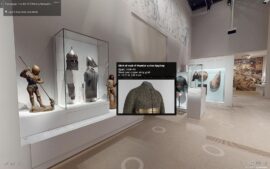AR (augmented reality) or augmented reality is the technology of superimposing a digital layer or objects over the video stream of a camera device (tablet, smartphone, etc.). The method of placing an object in augmented reality depends on the technology used. The technology is based on computer vision, which recognizes the image from the camera.
What you can place in augmented reality:
- three-dimensional models;
- animated scenes consisting of several three-dimensional models;
- 2D-scenes;
- interactive animated 2D-scenes;
- 2D images (illustrations, photographs);
- video files superimposed on a vertical or horizontal plane;
- UI (interface) elements.
Augmented reality can be implemented as an application or in web format. To use an augmented reality application, you need to download and install it on the device you are using. To use web-based augmented reality technology, simply follow the link to the website.
The difference between the two types lies in the quality of the picture (in the detail and complexity of the three-dimensional graphics), tracking (tracking the user’s movement relative to augmented reality objects and augmented reality objects relative to the user), speed, the quality of the AR application.
Types of AR solutions:
1) DemoAllow you to view augmented reality objects |
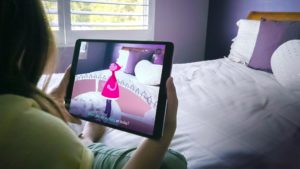 |
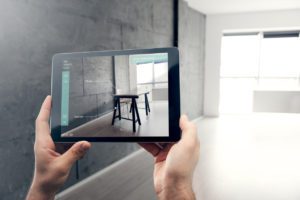 |
2) InteractiveConfigurators, where the user can not only view the augmented reality object, but also change its appearance. The configurator can be connected to the online store. For example, the IKEA Place app: you can choose the sofa you like, “try it on” in your living room, and then make a purchase. |
3) Multiplayer gamingFor example, Pokemon Go. This is the integration of AR technology and GPS. There could be other game mechanics, such as two players scanning the same image. They can be in completely different places, but scan the same image. |
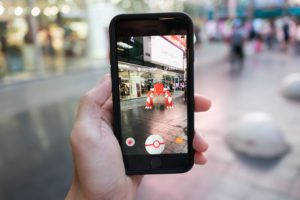 |
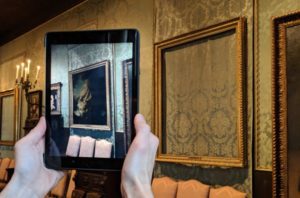 |
4) ExpositionAllow you to complement and animate objects, such as museum or exhibition exhibits, with three-dimensional and two-dimensional graphics. These can be promotional applications (e.g. a calendar or an augmented reality business card). When hovering over the image of a business card or calendar, an animated augmented reality object appears. It represents a brand or an official of a company. |
How augmented reality is created:
AR creation consists of two parts: content and development. Development is based on the SDK (software development kit) – a set of development tools that allows software professionals to create applications for a particular software package, software basic development tools, hardware platform, computer system, game consoles, operating systems and other platforms. The SDK takes advantage of each and reduces integration time.
Common SDKs:
- Vuforia uses computer vision, real-time tracking of flat images and simple three-dimensional objects. Based on this platform, applications are created in which augmented reality objects are placed on top of markers or targets (images, objects or text)
- ArCore is a technology for the Android platform from Google. Based on this solution, applications are created, where objects are placed on the plane or marker.
- ArKit is an alternative solution for iOS platforms. Allows you to recognize planes, as well as pre-scanned and uploaded to the application three-dimensional objects and markers.
- AR Foundation – used for cross-platform applications. This solution allows unified development of the application: the developer creates the functionality, and then with the help of this AR Foundation add-in activates ArCore or ArKit (depending on the chosen platform of the device).
- SLAM (simultaneous localization and mapping) – the technology of simultaneous navigation and mapping. It is used in mobile autonomous devices for map building in an unknown space or to update the map in a predetermined space with simultaneous control of current location and traveled distance.
- Maxst and Wikitude solutions, as well as less known platforms, are developed on the same principle. In addition, the quality of the augmented reality application (regular or web) depends on the device. In particular, it depends on the performance/power of the processor, the graphics core and the camera that is installed on the device.



